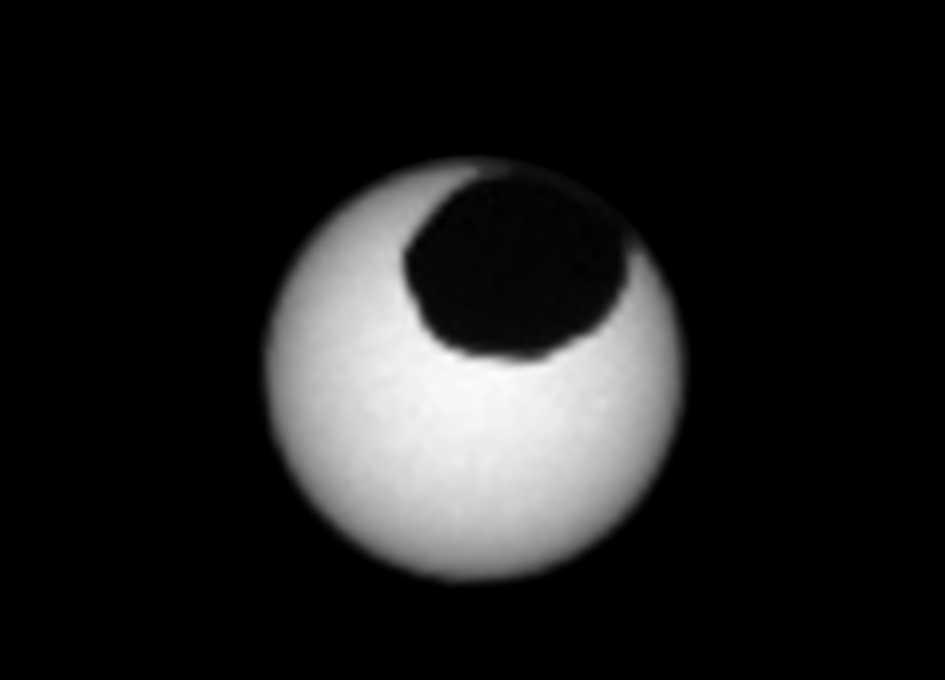Washington: NASA’s Curiosity Mars rover has send back spectacular imagery of two solar eclipses caused by Phobos and Deimos — two Moons of the Red Planet.
The eclipses were captures by the solar filters on the Curiosity’s Mast Camera (Mastcam) that allows it to stare directly at the Sun.
Phobos, which is about 11.5 km across, was imaged on March 26, while Deimos, which is about 2.3 km across, was photographed March 17, NASA said in a statement Thursday.
Phobos does not completely cover the Sun, so it would be considered an annular eclipse. Because Deimos is so small compared to the disk of the Sun, scientists would say it’s transiting the Sun.
In addition to capturing each moon crossing in front of the Sun, one of Curiosity’s Navigation Cameras (Navcams) also observed the shadow of Phobos March 25.
As the moon’s shadow passed over the rover during sunset, it momentarily darkened the light.
These events also help make Mars relatable, said Mark Lemmon of Texas A&M University.
“Eclipses, sunrises and sunsets and weather phenomena all make Mars real to people, as a world both like and unlike what they see outside, not just a subject in a book,” he added.
Curiosity, which landed Mars in 2012, was designed to assess whether Mars ever had an environment able to support small life forms called microbes. In other words, its mission is to determine the planet’s “habitability”.
Solar eclipses have been seen many times by Curiosity and other rovers in the past. Until now, there have been eight observations of Deimos eclipsing the Sun from either Spirit, Opportunity or Curiosity; there have been about 40 observations of Phobos.
There’s still a margin of uncertainty in the orbits of both Martian moons, but that shrinks with every eclipse that’s viewed from the Red Planet’s surface, the team said.
“More observations over time help pin down the details of each orbit,” Lemmon said. “Those orbits change all the time in response to the gravitational pull of Mars, Jupiter or even each Martian moon pulling on the other.”
IANS
